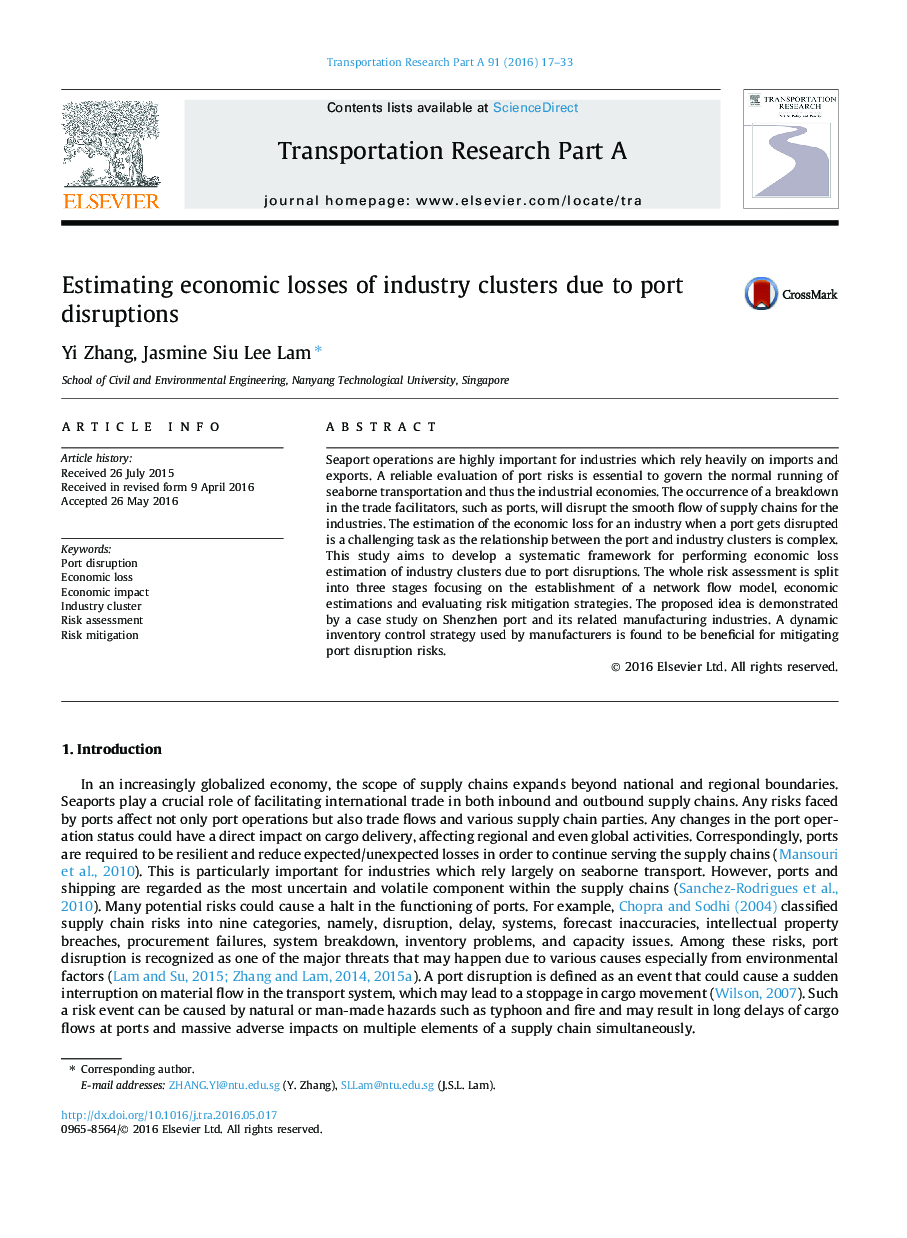| Article ID | Journal | Published Year | Pages | File Type |
|---|---|---|---|---|
| 310365 | Transportation Research Part A: Policy and Practice | 2016 | 17 Pages |
•A systematic framework for performing economic loss estimation of industry clusters due to port disruptions.•Petri Net models the relationship between the port and industries.•Shenzhen port and HP printer are used in the case study.•A dynamic inventory control strategy is beneficial for risk mitigation.
Seaport operations are highly important for industries which rely heavily on imports and exports. A reliable evaluation of port risks is essential to govern the normal running of seaborne transportation and thus the industrial economies. The occurrence of a breakdown in the trade facilitators, such as ports, will disrupt the smooth flow of supply chains for the industries. The estimation of the economic loss for an industry when a port gets disrupted is a challenging task as the relationship between the port and industry clusters is complex. This study aims to develop a systematic framework for performing economic loss estimation of industry clusters due to port disruptions. The whole risk assessment is split into three stages focusing on the establishment of a network flow model, economic estimations and evaluating risk mitigation strategies. The proposed idea is demonstrated by a case study on Shenzhen port and its related manufacturing industries. A dynamic inventory control strategy used by manufacturers is found to be beneficial for mitigating port disruption risks.
